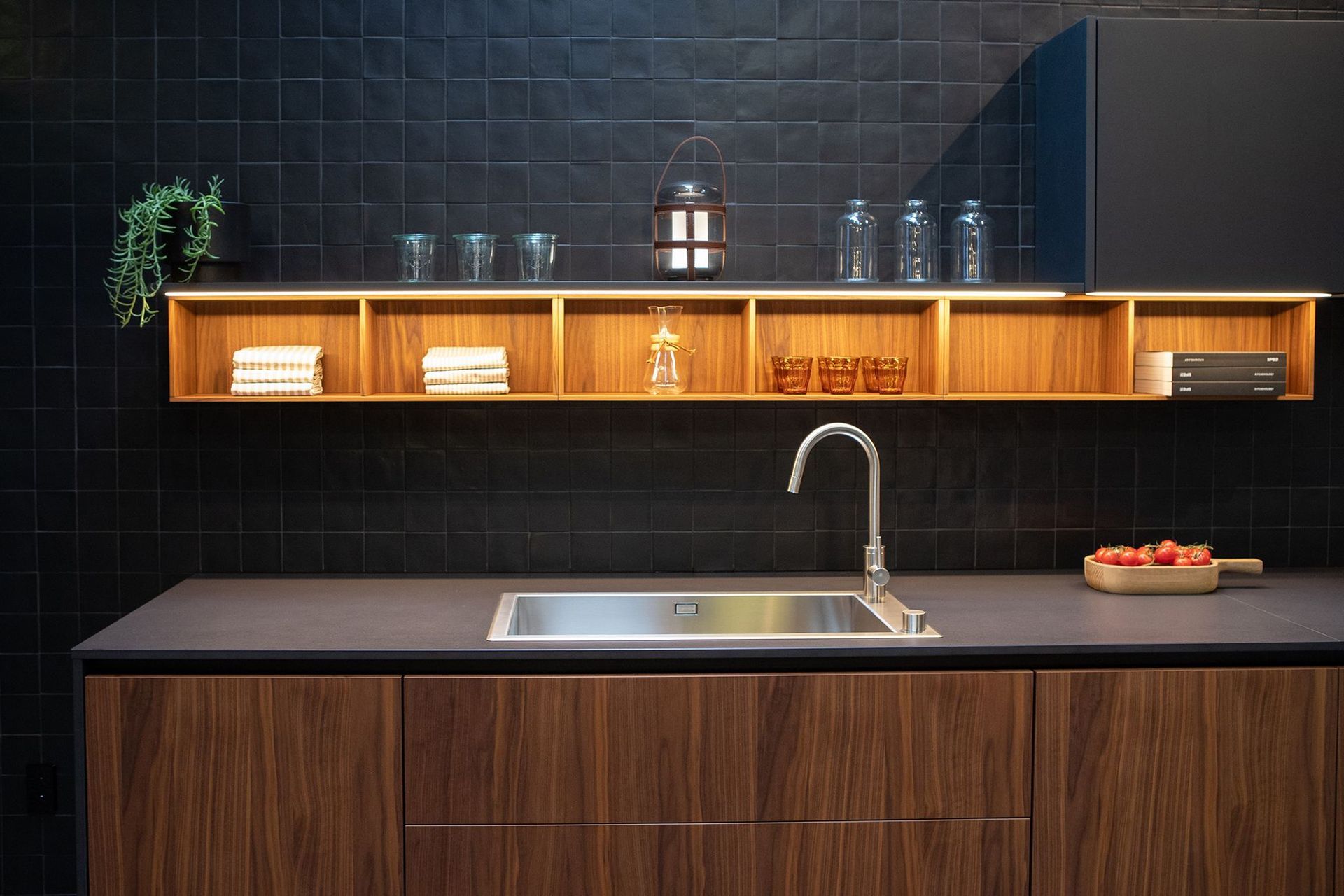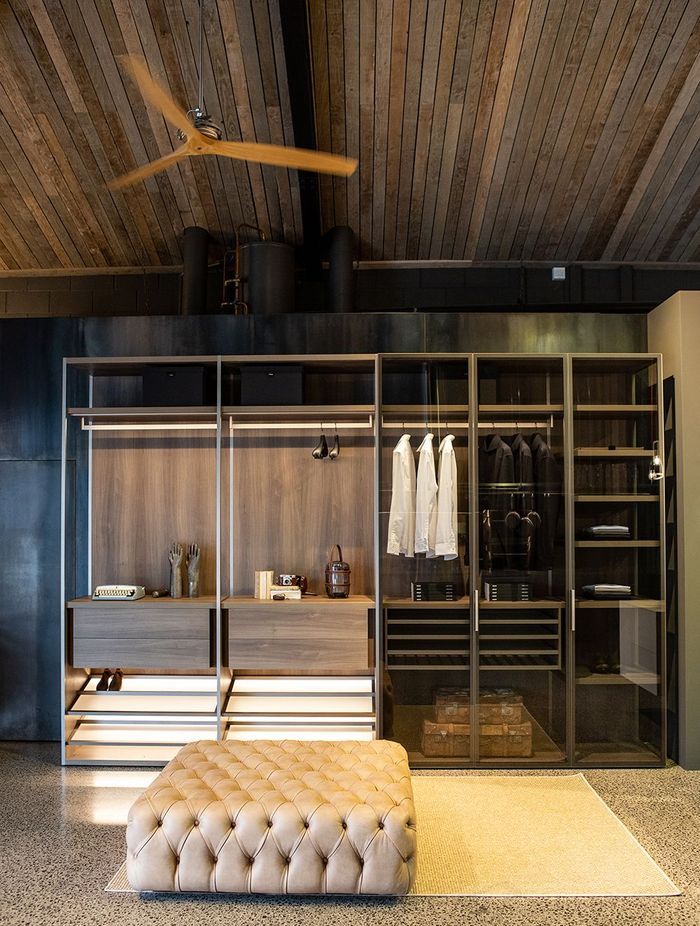How Italy made a local design industry into a global phenomenon
Written by
09 September 2019
•
7 min read

How has Italy created a localised design and manufacturing industry that is widely recognised around the world? What would it take for New Zealand to do the same? We interview the Italian CEO of Boffi SpA, Roberto Gavazzi, about Italy's rise to become the global powerhouse of design and his company’s worldwide influence spanning 85 years.
Roberto Gavazzi was recently in Auckland to launch the revamp of Boffi Studio Elemento, Boffi SpA's New Zealand showroom owned by Stephen Horton, and to introduce Kiwi buyers to the company’s latest offering, ADL, an impossibly beautiful door system by Italian designer Massimo Luca. Roberto was a long way from home but Boffi's story, and that of its home province in Italy, is an interesting one for New Zealand lovers of design as we seek to create a better-built environment.
It is widely known that high-quality products and craftsmanship have helped fuel the ‘Made in Italy’ moniker that has become so important to the country’s economy and global influence but a cultural attitude to design and home life is equally crucial. “The Italian aesthetic can be seen in food, design, fashion, and in all creative pursuits – it is just part of our lives,” suggests Roberto Gavazzi. “We believe in transferring good sense and a quality of life and, I think, that is what is behind the success of our industries – it’s about creating that feeling of comfort and pleasure in our homes.”
The cradle of Italian design can be found in one small, semi-rural region in Italy – that operates as both its design incubator and manufacturing hub. At the foot of the Alps in the region of Lombardy, between Milan and Lake Como, in the province of Monza and Brianza. According to The Financial Times, there are around 20,000 design-related companies in the Brianza area, including manufacturers, big-name design brands like Boffi, and smaller businesses consisting of skilled furniture makers and artisans.

“The secret of Italy’s design success is our strong traditions and the industrial base from which we operate,” says Roberto. “Today, Brianza probably has about 90 percent of Italy’s design companies, which offers incredible possibilities for us because there are factories, good workers, schools to teach people, sub-suppliers, designers, construction companies – basically, all you need at the highest level. There is also the capacity for entrepreneurs to flourish and the huge competition helps to push us forward. We have had to learn to swim in rough waters but this is not bad. This gives dimension to the Italian way of competing and having a competitive advantage is extremely important.”
“Developing a design hub requires all the best possible conditions to create this environment, including the right tax level, the best systems, and a good infrastructure,” adds Roberto. And Brianza is ideally situated, about 30 minutes’ drive from Milan and 45 minutes from Lake Como. Over the past two centuries, the area has been a magnet for affluent families wanting to build villas, which, in turn, requires highly skilled craftspeople to furnish them. During the 1920s and 1930s, some of Italy’s first modern buildings were built in the region, often in an Italian version of the International Style of architecture, consisting of rectilinear forms and minimal ornamentation.
After the Second World War, reconstruction efforts focused on developing the Brianza’s established furniture industry, and businesses were supported by the government, trade associations, a school for furniture making, and small furniture stores. By 1957, the city of Cantù alone had over 700 furniture manufacturers and most of them were small family-owned businesses.
During the 1950s, entrepreneurial companies began collaborating with famous Italian and foreign architects to create iconic designs, utilising local industrial and craft skills, which helped to fuel what we now understand to be the modern Italian design style.
Based in Lentate Sul Seveso, Boffi was started by designer Piero Boffi in 1937. Its reputation has arisen from craftsmanship and beautiful, timeless products, which range from bathtubs to chairs to kitchens designed over the past 85 years under the creative direction of designers’ Luigi Massoni, Antonio Citterio and, for the past 30 years, Piero Lissoni, alongside numerous collaborations with architecture and design superstars like Joe Colombo, Patricia Urquiola and Claudio Silvestrin.
Roberto has led the company for the past 30 years. “Our strategy has been to put together different companies and manufacturers and to form alliances with special suppliers of stone, tiles, taps, and so on,” he explains. “All of this is a great puzzle that continues to expand.”
While recessions have resulted in some of Italy’s largest firms being sold to foreigners in the past decade, raising fears that sell-outs could dilute the ‘Made in Italy’ branding of goods, companies in Brianza tend to be focussed on premium-quality manufacturing, drawing on engineering and design skills developed over generations, with the flexibility to adapt. Many are also family businesses with the strength and loyalty to overcome crises.

“There is real value in manufacturing locally,” suggests Robert. “We are seeing the results of mass and low-quality production from manufacturers in China and the like, but our production is mainly Italian and mostly in our region, with some coming from other parts of Italy and only a few parts coming from other European countries. To risk change and do more is not always easy in other countries but, in Italy, our makers and suppliers of materials are right next door. Being within a short distance is key to being a flexible supplier.”
“This business is like a big puzzle with lots of flexible units within a multi-layered structural solution,” adds Robert. “Industrially, Italy is a well-structured country. Germany is also a big player in terms of manufacturing but Italy is more engaged with smaller companies and suppliers, who create special products and have the capacity to be flexible. For example, one of our steel partners is one of the best manufacturers with the capability of interpreting steel, and it is only two hours’ drive away by car.”
Boffi now has 60 showrooms in 60 countries around the world, including New Zealand’s Grafton showroom near Mount Eden, which was designed with the aim of creating an inviting feel and a human scale. On display is the latest line of doors by ADL, which are constructed in 100 percent recyclable aluminium and glass and will shortly be available in New Zealand. The Piana, Line, Mitika, and Light collections all share fine, elegant frames that slide smoothly and quietly at the touch of a finger and will, no doubt, become a coveted product for New Zealand architects.
“This system is very unique,” suggests Roberto. “It has the best possible mechanism and a minimal structure, making it open to different solutions and finishes. It can separate an area or keep spaces open and wide. I believe these doors really elevate our collection and create new possibilities – of connecting bathrooms with bedrooms and creating powerful connections that are much more than these individual things.”
“Our ethos is to provide many solutions within one brand,” he adds. “To create perfect combinations with a collective vision – that have elegance and a great range of possibilities. And while it is most important to us to provide beautiful products, we don’t just open stores anywhere; we need to find people like Stephen Horton (the owner of Boffi Studio Elemento in Auckland) in every country,” says Roberto. “We need fantastic local ambassadors for our brand who really bring our company to the forefront.”
So could New Zealand take a similar path to Italy and develop our ‘Made in New Zealand’ brand into a global design phenomenon? “New Zealand’s countryside aesthetic is important because beauty is informing your character – you like beautiful things and that translates into wanting to surround yourself with beautiful things,” suggests Roberto. “You also have a lot more space and the ability to be flexible – more than in London, New York and in Europe, where it’s hard to build anything new anymore, especially beside the sea. There are incredible possibilities here.”
References:
‘Italian design firms beat recession by drawing on trusted skills’ by Rachel Sanderson; The Financial Times, 3 April 2015.
‘Half of Italy’s stock market now in foreign hands – study’, reporting by Agnieszka Flak, editing by Greg Mahlich; Reuters, 7 January 2016.
